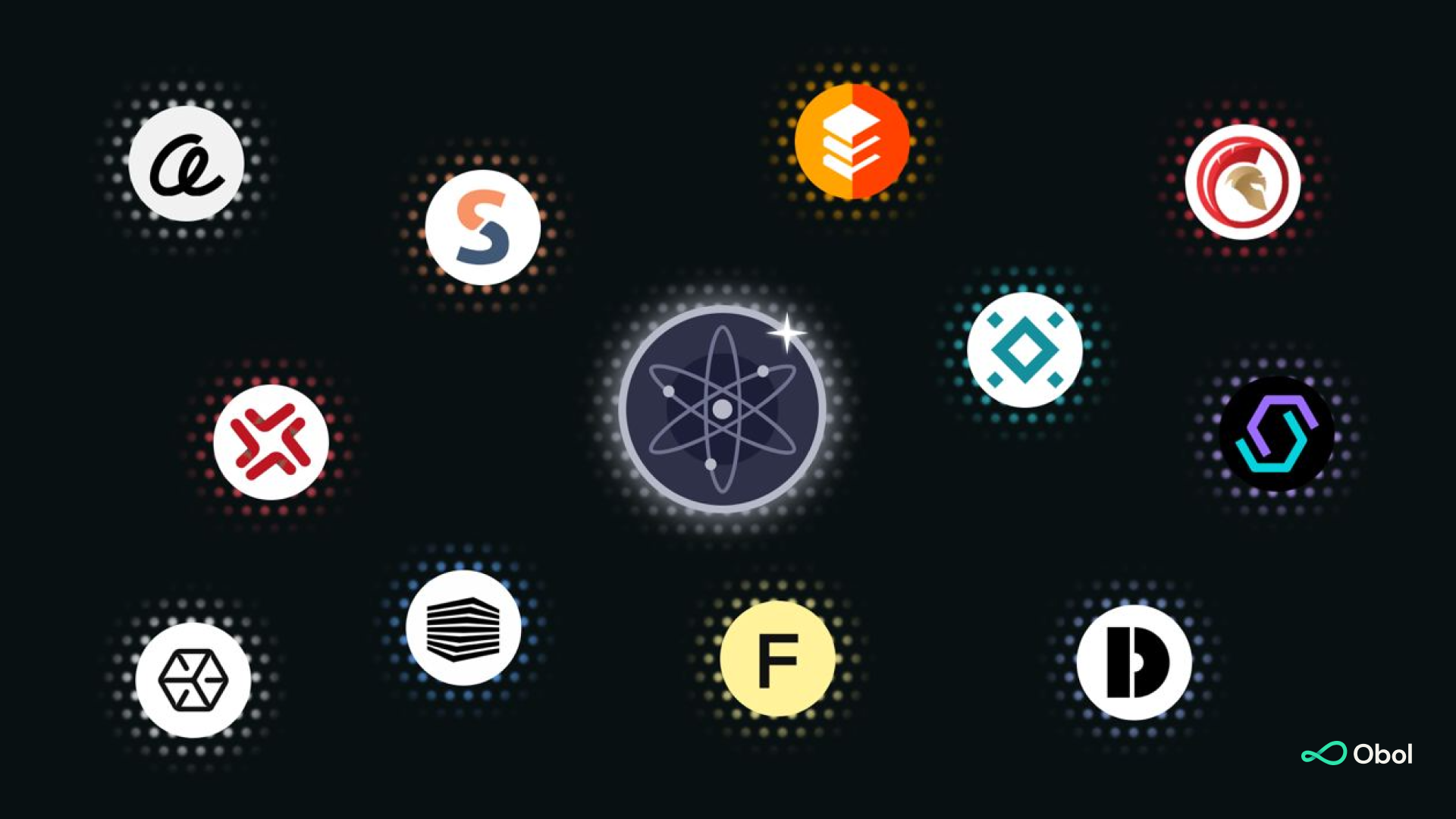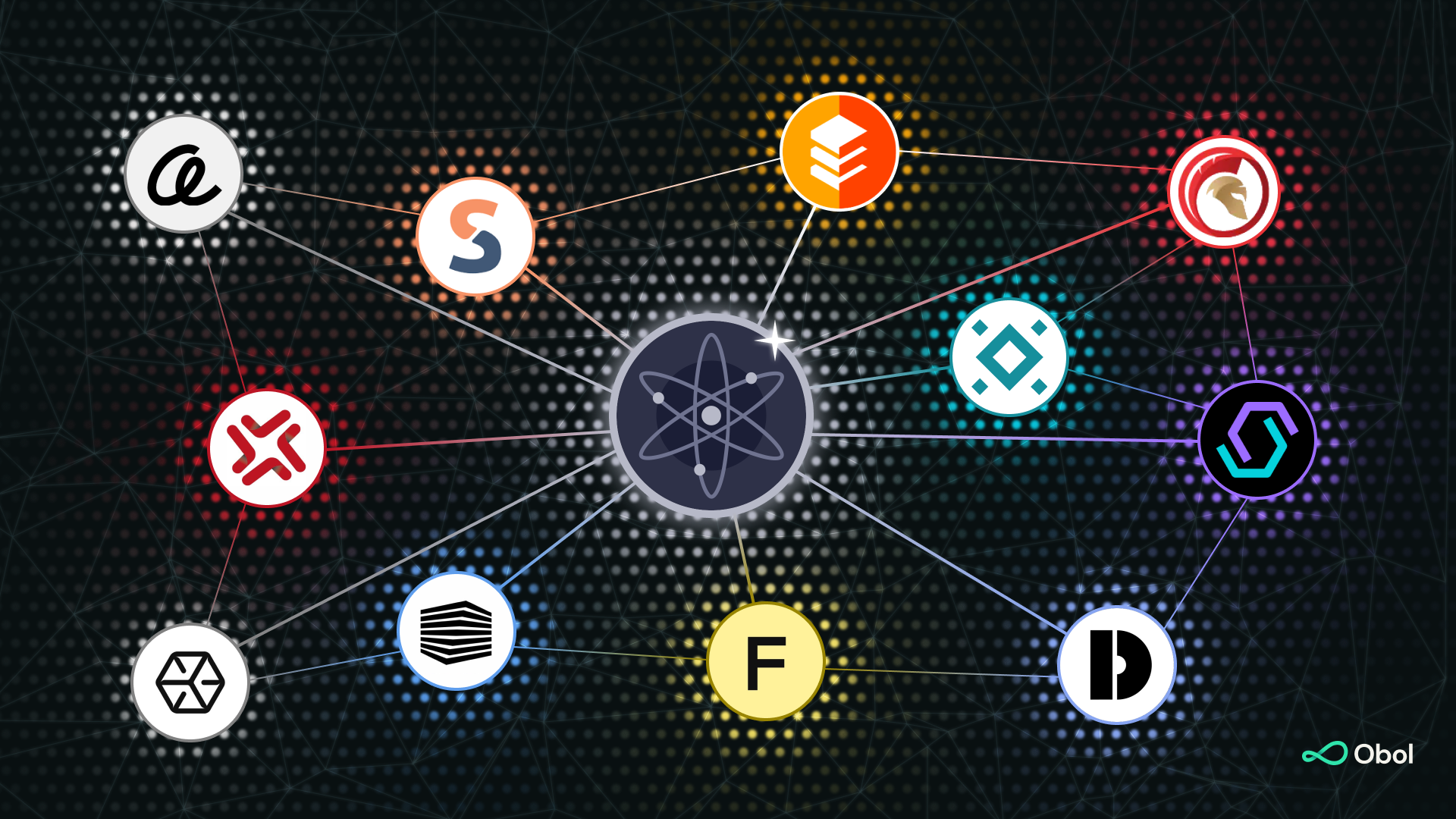Decentralising Cosmos validator sets with Distributed Validator Technology (Part 1)
In this multi-part blog post series, we will be researching and exploring potential use cases of Distributed Validator Technology (DVT) in the Cosmos ecosystem.

This blog post is Part 1 of a multi-part series where we will explore potential use cases of Distributed Validator Technology (DVT) within the Cosmos ecosystem.
Special thanks to Abhishek Kumar, Corver Roos, Gianguido Sorà, members of the Obol Core team, for their contributions and feedback as we delve into Cosmos.
We would also like to thank our partners at Nascent, Figment, Placeholder, A41, Stakely, DSRV, Blockscape, Swiss Staking, Imperator, Cosmostation, Chorus One, Staking Facilities, Everstake, Stride, Quasar, ICF, Binary Builders for their input and invaluable feedback around DVT in Cosmos.
Introduction
Today, in Ethereum there is no way to operate validators in a high-availability environment without introducing slashing risk. That is because each validator acts as a single entity with their own individual private key.
The inability for validators to run in a distributed fashion creates many individual and systemic risks. Individually, validators can easily go offline (as there is no failover), risking missed rewards and introducing slashing risk when running active-passive setups. Systemically, stakers can be susceptible to malicious behaviour or failures by validators. Additionally, the high technical and monetary requirements needed to operate a single validator forces more people to rely on staking-as-a-service providers, leading to a natural pooling effect that exacerbates existing stake centralization risk.
DVT allows a single validator to be run on a cluster of nodes working together as a distributed validator. This provides an active redundancy such that when a certain number of nodes go down (i.e. 1 of 4, 2 of 7, 3 of 10, etc.), the distributed validator cluster can still operate normally. While the first implementation of DVT has been focused on Ethereum, it is important to explore other applications of this technology primitive.
Leveraging DVT in Cosmos
Cosmos is an ecosystem of interoperable application-specific blockchains, or “appchains”, connected together via the Inter-Blockchain Communication protocol (IBC). Application-specific chains empower developers with the autonomy to optimise performance, security, and sovereignty through tailored design decisions, with all the benefits of customizability. This means a blockchain can be fine-tuned for a specific sector or application. Unlike general-purpose blockchains, developers construct their own chain from the ground up, encompassing full-node clients, light-clients, and all requisite interfaces (CLI, REST, ...) for seamless node interaction.
At Obol, we’ve been closely monitoring Cosmos due to its unique features and capabilities that enable cross-chain communication and interoperability. At the forefront of these features is IBC, which serves as the standard communication channel for applications on different chains to interact with each other. IBC allows for seamless transactions and data transfers between blockchains, opening up new possibilities for dApps. Additionally, Cosmos boasts several other innovative features such as Interchain Accounts, Interchain Security, Interchain Queries, and the Cosmos SDK, the most popular and battle-tested framework for building application-specific blockchains.
While DVT has evolved into a vital component of Ethereum’s PoS roadmap, it is our belief that DVT can make a substantial contribution to other PoS ecosystems, with Cosmos in the frontline.

Despite numerous similarities, Cosmos Hub validators operate in a distinct manner compared to their Ethereum counterparts. Delegators assign ATOM to validators, who are then responsible for operating a full node and actively participating in consensus by broadcasting votes containing cryptographic signatures that are signed using the validator's private key. Validators are responsible for committing new blocks to the blockchain, receiving rewards in return. Both delegators and validators are also expected to take part in governance by voting on proposals. Slashing conditions for Cosmos Hub validators include double-signing blocks at the same height and downtime.
During the first quarter of 2023, we have undertaken a comprehensive research journey, delving into the Cosmos ecosystem to assess the relevance of DVT as a potential addition to its validator tech stack. In the process, we have engaged with over 50 key ecosystem stakeholders, including Cosmos validators, appchains, MEV protocols, and prominent foundations and engineering teams.
After thorough analysis, we have identified two primary use cases that address specific challenges currently faced by Cosmos validators:
Use-case #1: Cosmos Hub
Small and medium-sized enterprise validators (SME) of the Cosmos Hub face considerable economic challenges, even if they manage to be included in the active set. Our research, based on discussions with key stakeholders of the Cosmos Hub, reveals that many validators are struggling to meet the stake threshold required for integration into the active set. Additionally, the mounting pressure to support new consumer chains in the context of Replicated Security will prove to be overwhelming for a significant portion of SME validators (v9-Lambda went live mid-March).
DVT can provide a solution by offering the ability to pool resources and chain support for SME validators.
To illustrate, let's consider a group of validators with ranks between 176-186 who are unable to secure a spot in the top 175 based on their staked amount. In this scenario, SME operators can collaborate leveraging DVT, pool their resources, and create a larger validator cluster that acts as a single validator in the network. This larger cluster would have a total staked amount that enables them to potentially surpass the current 175th validator and occupy a rank in the active validator set. An example could be a group of 4 SME operators outside the top 175 each contributing 26k $ATOM to the cluster, resulting in a total pooled amount of 104k $ATOM. With this pooled amount, the group can spin up a new validator and delegate all 104k $ATOM to it. This new Distributed Validator has the potential to surpass the incumbent 175th validator, if the 175th validator had a stake of, for example, 100k $ATOM.
This alternative creates a more competitive and viable solution for a whole subset of validators and levels the playing field for the Cosmos validator, positioning them to better compete for delegations against larger validators.
Use-case #2: Appchains
A primary advantage of Cosmos' sovereign security models is the flexibility in bootstrapping a validator set to meet the unique needs of individual appchains. DVT has the capacity to cater to a wide range of preferences within the appchain validator set spectrum.

We have identified two distinct scenarios for DVT in the context of appchains:
- Scenario #1) Appchains that want to increase security + decentralisation without expanding the validator set.
- Scenario #2) Appchains that want to expand their validator set in a cost-efficient manner.
For scenario #1, only a few validators are in charge of a significant portion of the stake - stake security risk runs high. DVT allows single validators to be run on a cluster of nodes working together as a distributed validator. This configuration ensures a robust and secure active redundancy, allowing the distributed validator cluster to continue operating normally even when a certain number of nodes become unavailable. DVT streamlines the costly and lengthy process of bootstrapping decentralised validator sets for appchains by fostering collaboration among existing validators, enabling them to form secure multi-organization clusters without onboarding new validators.
For scenario #2, DVT empowers appchains to boost security and decentralisation by enabling the seamless integration of additional validators in an economically viable manner for small and medium-sized validators (even large validators as well!). By leveraging DVT, these validators can form clusters and effectively decentralise the validator set, striking a balance between cost-efficiency and decentralisation while reducing stake concentration risks associated with appchains' validator sets.
Closing Remarks
At Obol, we advocate for the inclusion of DVT in the broader conversations on security models, alongside concepts such as Replicated Security and Mesh Security. We are optimistic that DVT holds a major position in shaping the long-term security landscape of Cosmos.
Currently we are actively researching how governance will be handled within clusters and exploring potential designs - Part 2 of this series will touch on this subject. We’re also exploring potential designs for rewards distribution. A concept we are developing internally is what we call "Participation Proofs", which aims to align the incentives of all cluster operators as a whole (PoS rewards and penalties). This method takes into account the participation ratio of each operator when calculating reward splits. Operators with lower participation ratios (those who have performed fewer validator duties than their peers) would receive a lower ratio of rewards. We believe that this approach will incentivize all operators to actively participate and behave responsibly within the cluster.
As we continue to explore and refine DVT's potential, we actively seek feedback and insights from the community to test our hypotheses and further refine the potential for DVT within the Cosmos ecosystem. By engaging in this collaborative effort, we aim to advance the development of secure and innovative solutions that strengthen the Cosmos staking ecosystem as a whole.
If you would like to engage in further conversations or provide additional feedback, you can contact us at: [email protected]

